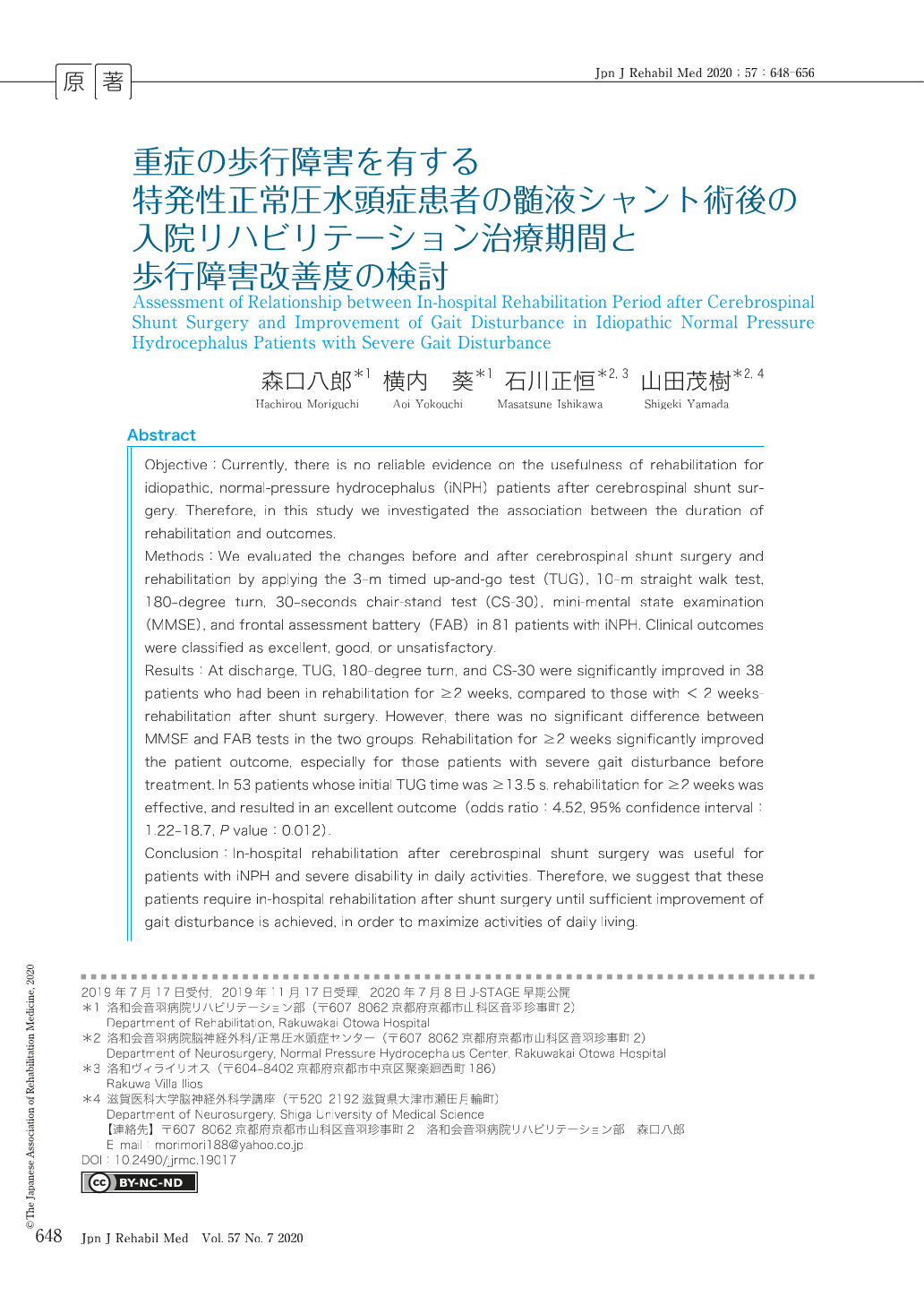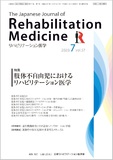Japanese
English
- 販売していません
- Abstract 文献概要
- 1ページ目 Look Inside
- 参考文献 Reference
要旨
目的:特発性正常圧水頭症(iNPH)のシャント術後リハビリテーション治療の有用性については検証されておらず,入院リハビリテーション治療期間と退院時の歩行機能や退院後の経過との関係性を後方視的に検討した.
方法:iNPH患者81人(平均年齢76歳)を解析対象とし,入院リハビリテーション治療期間が2週間以上であった38人と2週間未満であった43人に分け,治療前後のTUG,10m直線歩行試験,180°ターン,CS-30,MMSE,FABの改善度を比較した.退院後の経過は3段階で判定した.
結果:2週間未満よりも2週間以上の入院リハビリテーション治療を行った患者のほうが,退院前のTUG,180°ターン,CS-30が有意に改善していた.特に,入院時TUG ≥ 13.5秒の場合には退院後の経過が良好であった.
結論:iNPH患者は,自立歩行を目標として手術と術後リハビリテーション治療を計画的に行うことが重要である.
Objective:Currently, there is no reliable evidence on the usefulness of rehabilitation for idiopathic, normal-pressure hydrocephalus (iNPH) patients after cerebrospinal shunt surgery. Therefore, in this study we investigated the association between the duration of rehabilitation and outcomes.
Methods:We evaluated the changes before and after cerebrospinal shunt surgery and rehabilitation by applying the 3-m timed up-and-go test (TUG), 10-m straight walk test, 180-degree turn, 30-seconds chair-stand test (CS-30), mini-mental state examination (MMSE), and frontal assessment battery (FAB) in 81 patients with iNPH. Clinical outcomes were classified as excellent, good, or unsatisfactory.
Results:At discharge, TUG, 180-degree turn, and CS-30 were significantly improved in 38 patients who had been in rehabilitation for ≥ 2 weeks, compared to those with < 2 weeks-rehabilitation after shunt surgery. However, there was no significant difference between MMSE and FAB tests in the two groups. Rehabilitation for ≥ 2 weeks significantly improved the patient outcome, especially for those patients with severe gait disturbance before treatment. In 53 patients whose initial TUG time was ≥ 13.5 s, rehabilitation for ≥ 2 weeks was effective, and resulted in an excellent outcome (odds ratio:4.52, 95% confidence interval:1.22-18.7, P value:0.012).
Conclusion:In-hospital rehabilitation after cerebrospinal shunt surgery was useful for patients with iNPH and severe disability in daily activities. Therefore, we suggest that these patients require in-hospital rehabilitation after shunt surgery until sufficient improvement of gait disturbance is achieved, in order to maximize activities of daily living.

Copyright © 2020, The Japanese Association of Rehabilitation Medicine. All rights reserved.


